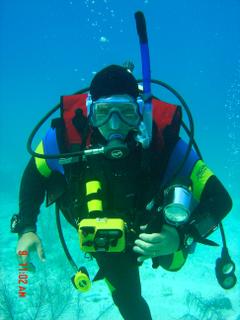Of course, it's just another one of the totally incorrct phrases that we learned in freshman biology, but then I was a teacher I would always use it as an answer for the coctail party challenge: "So, you're a professor, eh? Say something intelligent! My response: "Ontology recapitulates phylogeny."
Anyway, I just finished a great book “The Anthropology of Modern Human Teeth” and I highly recommend it to anyone who is interested in forensic anthropology.
The thrust of the book is that permanent genetic markers exist in the teeth of specific racial groups and that dental analysis can find "markers" that are passed-down for many generations, making teeth an ideal way to trace the racial characteristics of ancient graveyards. This may be true for other populations as well.
For example, I've heard some people say that they can tell if someone is from from England just by looking their teeth.
Now I don’t know much about genetics, but I know from my personal experience that your teeth can reveal Indian heritage.
I did some research and there are several million Americans with a little bit of Indian ancestry. Ever since John Smith and Pocahontas, Americans began the process of genetic assimilation (interestingly, Pocahontas is buried in England and has over 100,000 descendents, as noted in this Superb article on Pocahontas by David Morenus).
Mr. Morenus has fascinating details and show that Pocahontas looked nothing like the Disney cartoon characterization of her:
I also recommend the book “A Little Bit of Indian” for some fascinating facts about inherited physical traits. There is an Indian Halotype and the Cherokee Nation is doing blood research.
“Research into genetics in the 21st century has revealed that American Indian Haplotype is a type of material found in over 95% of American Indians so far tested.
This particular Haplotype is an easily obtained chain of genetic material that is obtained by the extraction of Mitochondria as a means to prove one has American Indian Blood somewhere in their family history.”
There is also the GeneTree Native American blood tests. This site has a wonderful world map showing how genetic testing can reveal historical patters of population movement:
The research article “Bye Bye Beringia” quotes an archeological study suggesting that the some Native Americans were quite similar to Europeans:
“They walked the ground between the site of today's Walt Disney World and the Space Coast, hunting white-tailed deer and bobcat among the pine and oak trees.
They fished for bass and sunfish or scooped up turtles, frogs, and snakes.
Their primary job -- filling their stomachs -- took only about two hours each day”
This article also notes that the Windover site has enough usable DNA to discover the genetic origins of the inhabitants, even though it is 8,000 years old:
"The ancient human DNA is of such quality as to allow genetic cloning, or to make comparisons with present living ethnic groups, or to test kinship with other ancient peoples. But the latter would require usable DNA, and this treasure trove seems to be the oldest group of human DNA ever found anywhere in the World. "
But there is more evidence. This CNews article suggests that there may have been pre-1492 genetic mixing of Native Americans bloodlines, with some Indians looking like Europeans:
"There were three men here whose beard is almost the same colour as mine and who look like typical Scandinavians," he wrote. "One woman has the delicate features one sees on Scandinavian girls."
Stefansson speculated the people he met had descended from the inhabitants of the vanished Norse settlements. His theory thrust him onto the front pages of newspapers across the continents with headlines of a "lost white race."
This GeneTree genetic ancestry blood test looks fascinating:
“AncestryByDNA 2.5: Determines what genetic percentage of Native American, European, East Asian, and African a person has, based on their autosomal DNA profile.”
My friend Tim Wu worked as a physician on the human Genome project, and he told me some fascinating predictions. Evidently, the human genome project is just the blueprint for human genetics, like an empty database. It will not be until we start collecting data for all 3-billion pairs (25,000 genes), a task that costs over $30,000 per person today.
However, once reliable data is added to the genome template the whole world will change, with a resolution to the eternal “nature v. Nurture” argument and important privacy issues. Best of all, the annoying old saying “Ontology Recapitulates Philology” will finally be proven wrong. Who knows, we may someday see these results too:
- The lifespan of a baby will be known to within two years.
- Your probable natural cause of death will be accurately predicted.
- Insurance companies will know with a high degree of reliability your predisposition to get a host of diseases.
- Your intellect and physical abilities can be predicted with high reliability.
Here is a great summary of the hopes of the human genome project. I’m no Oracle, but I’ll bet that the human genome will open-up possibilities that scientists have never thought of before.
